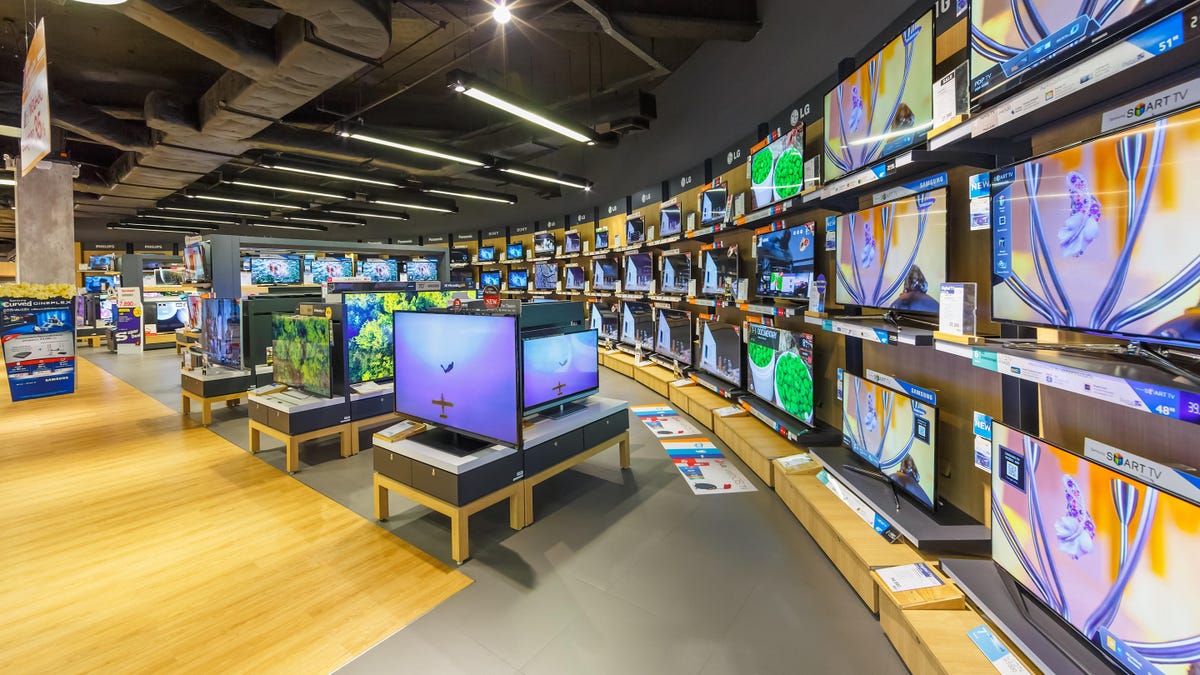Don’t Get Tricked Into Buying a Crappy TV
We are smack in the middle of the holiday shopping season, and one of the biggest ticket items people often look to buy this time of year is a new television. Unfortunately, manufacturers are one step ahead of you,...


Photo: Tooykrub (Shutterstock)
We are smack in the middle of the holiday shopping season, and one of the biggest ticket items people often look to buy this time of year is a new television. Unfortunately, manufacturers are one step ahead of you, so that great “deal” you’re eyeing may actually not be much of a deal at all. Here are ways to shop smarter and not fall prey to common traps so you don’t end up with a TV lemon.
These are the price ranges for a good deal on a TV
First, it’s important to know whether the TV is actually set at a good price, depending on its size, picture quality, and brand. Here are the price ranges to look for and what to expect from each one:
$150 to $300 budget TVs: This is the range where you’ll find a lot of the TV deals advertised in stores like Walmart, Target, and Best Buy. You can get some decent 4K UHD, LED or QLED 55" smart TV deals in this category from brands like TCL, Hisense, Vizio, and Amazon Fire TVs. While these brands are considered “budget” TVs, they offer a good quality for the price. If you are not a serious gamer or a tech wizard, you probably won’t be able to tell much of a difference from TVs better than what is offered here.$300 to $650 55" to 75" TVs: If you want more size and are willing to spend a bit more, you can find some big 4K Smart TVs for this price from the same budget TV brands. They’ll offer similar specs, but you’ll be paying for the more impressive size.$650 and above OLED TVs: A step up from the QLED, UHD and LED technology you’ll find in the budget TV range, these TVs will offer the OLED technology that offers better viewing angles, better gaming experience, and a cheaper electric bill. You can read more about the difference between OLED and QLED technology here.Beware of “derivative models”
A lot of major retailers will have TVs displayed front and center on their websites or advertisements, but there’s a chance that some of them are what are Forbes calls “derivative models,” TVs made by manufacturers specifically for holiday deals to be sold at bargain prices. This means you’re really getting what you’re paying for—a scaled down version from a normal TV that may contain lower quality components and isn’t really the “deal” it seems to be.
G/O Media may get a commission
If a deal seems particularly good, find the model number and the Manufacturer Suggested Retail Price (MSRP) on the manufacturer’s website, and compare the MSRP price to the retailer’s “deal” price. If you can’t find the model on the manufacturer’s website, that can indicate that it’s a discontinued model or a derivative only distributed to retailers for flash sales. You can also ask a representative from the manufacturer about the model, and they should give you more information.
Look for price-matching programs and check price history
Retailers like Target and Best Buy offer price-match guarantee programs so that if a product drops in price after purchase, the difference is reimbursed to you (Best Buy limits this to the return-time window). These kinds of programs are one safety net for knowing you’ll get the best deal for the specific model you’re looking to get.
You can also use websites or plugins that show you a product’s price history so you’re less likely to be tricked by retailers’ price-hiking malpractices. Camelcamelcamel, for example, can help you find the price history for any product from Amazon—just paste the item’s link in the search bar and see how the price has changed over time. Amazon might sometimes advertise a product as being on a special holiday sale by increasing an item’s list price and then slashing that list price to show you its new “sale price.” Honey can do the same thing for the price histories on certain websites outside of Amazon. Both of these websites can be used as plugins for your browser.

 FrankLin
FrankLin 































